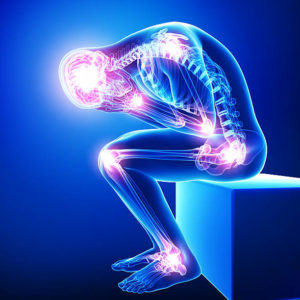
Diagnosed with Cancer? Your two greatest challenges are understanding cancer and understanding possible side effects from chemo and radiation. Knowledge is Power!
Learn about conventional, complementary, and integrative therapies.
Dealing with treatment side effects? Learn about evidence-based therapies to alleviate your symptoms.
Click the orange button to the right to learn more.
- You are here:
- Home »
- Blog »
- side effects ID and prevention »
- CIPN Chemobrain Related!?
CIPN Chemobrain Related!?

It shouldn’t come as a surprise to learn that, according to the first study linked below, CIPN and Chemobrain are related. As a cancer survivor myself who lives with both CIPN and Chemobrain, I have noticed that my symptoms overlap. And once I read the study linked below, I realized that my improving Chemobrain led to fewer falls. Meaning, my improving chemobrain seemed to improve my CIPN.
Chemobrain and Chemotherapy-induced peripheral neuropathy defined
David Emerson
- Cancer Survivor
- Cancer Coach
- Director PeopleBeatingCancer
Chemotherapy-Induced Peripheral Neuropathy Tied to Compromised Executive Function
“Chemotherapy-induced peripheral neuropathy (CIPN) is linked to a decline in executive and neuromuscular function, a new finding that may increase the risk for compromised mobility and fall risk…
Research Gap-
Characterized by numbness, tingling, pain, and motor impairment, CIPN affects up to 50% of all patients with cancer that is treated with taxane-, platinum-, or vinca alkaloid–based chemotherapy. The condition is among the leading dose-limiting toxicities, potentially increasing mortality risk…
“Chemotherapy can be neurotoxic, but few studies have linked neurotoxicity to the central nervous system and peripheral nervous system,” McNeish said…
“Among older cancer survivors treated with chemotherapy, the presence of CIPN was independently associated with reduced executive function,”
A recent study by the same investigators showed a link between executive function and balance in cancer survivors (mean age, 65.6 years; 88% women) treated with chemotherapy…
Based on the current findings, the research suggests that “current clinical approaches to caring for this growing population [of cancer patients] should not assume that the well-known increased fall risk is solely related to CIPN…”
McNeish speculated that two potential hypotheses could explain the association between CIPN and reduced executive function in older cancer survivors.
“First, CIPN is associated with other conditions such as depression and anxiety which are associated with reduced executive function,” he said.
“The second is that cancer-related cognitive dysfunction and CIPN share pathogenic mechanisms of neuronal injury, inflammation, and advanced aging, and thus some patients are vulnerable to both central (cancer-related cognitive function) and peripheral (CIPN) neurotoxicity…”
Yoga for Chemotherapy-Induced Peripheral Neuropathy and Fall Risk: A Randomized Controlled Trial
“Results- We randomly assigned 41 participants into yoga (n = 21) or usual care (n = 20). At week 8, mean NRS pain decreased by 1.95 points (95% confidence interval [CI] = -3.20 to -0.70) in yoga vs 0.65 (95% CI = -1.81 to 0.51) in usual care (P = .14). FACT/GOG-Ntx improved by 4.25 (95% CI = 2.29 to 6.20) in yoga vs 1.36 (95% CI = -0.47 to 3.19) in usual care (P = .035). Functional reach, an objective functional measure predicting the risk of falls, improved by 7.14 cm (95% CI = 3.68 to 10.59) in yoga and decreased by 1.65 cm (95% CI = -5.00 to 1.72) in usual care (P = .001). Four grade 1 adverse events were observed in the yoga arm.
Conclusion- Among breast and gynecological cancer survivors with moderate-to-severe CIPN, yoga was safe and showed promising efficacy in improving CIPN symptoms…”


